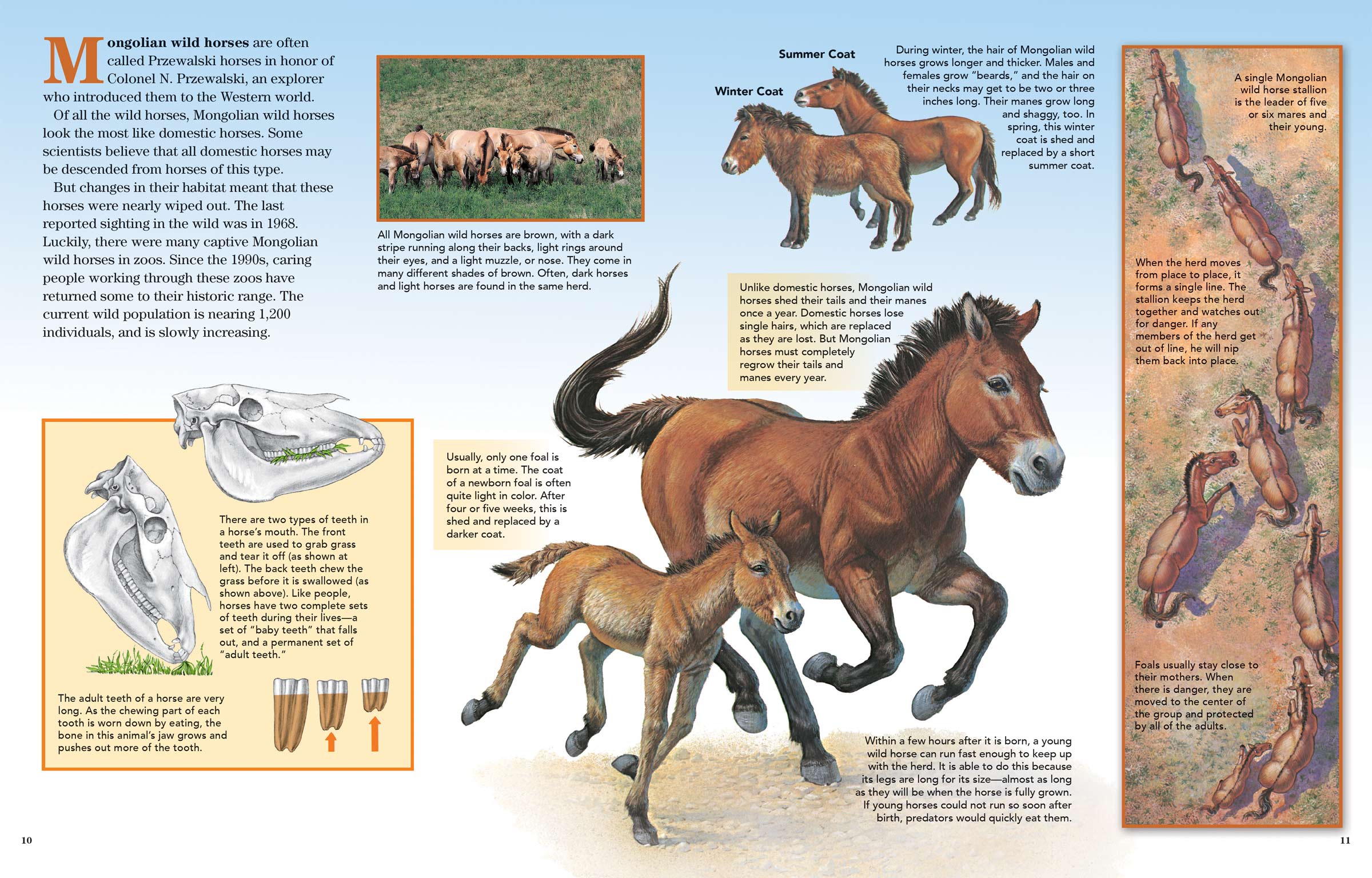
Mongolian Wild Horses
ByMongolian wild horses are often called Przewalski horses in honor of Colonel N. Przewalski, an explorer who introduced them to the Western world.
 Of all the wild horses, Mongolian wild horses look the most like domestic horses. Some scientists believe that all domestic horses may be descended from horses of this type.
Of all the wild horses, Mongolian wild horses look the most like domestic horses. Some scientists believe that all domestic horses may be descended from horses of this type.
But changes in their habitat meant that these horses were nearly wiped out. The last reported sighting in the wild was in 1968. Luckily, there were many captive Mongolian wild horses in zoos. Since the 1990s, caring people working through these zoos have returned some to their historic range. The current wild population is nearing 1,200 individuals, and is slowly increasing.
All Mongolian wild horses are brown, with a dark stripe running along their backs, light rings around their eyes, and a light muzzle, or nose. They come in many different shades of brown. Often, dark horses and light horses are found in the same herd.
There are two types of teeth in a horse’s mouth. The front teeth are used to grab grass and tear it off (as shown at left). The back teeth chew the grass before it is swallowed (as shown above). Like people, horses have two complete sets of teeth during their lives—a set of “baby teeth” that falls out, and a permanent set of “adult teeth.”
The adult teeth of a horse are very long. As the chewing part of each tooth is worn down by eating, the bone in this animal’s jaw grows and pushes out more of the tooth.
Usually, only one foal is born at a time. The coat of a newborn foal is often quite light in color. After four or five weeks, this is shed and replaced by a darker coat.
During winter, the hair of Mongolian wild horses grows longer and thicker. Males and females grow “beards,” and the hair on their necks may get to be two or three inches long. Their manes grow long and shaggy, too. In spring, this winter coat is shed and replaced by a short summer coat.
Unlike domestic horses, Mongolian wild horses shed their tails and their manes once a year. Domestic horses lose single hairs, which are replaced as they are lost. But Mongolian horses must completely regrow their tails and manes every year.
A single Mongolian wild horse stallion is the leader of five or six mares and their young.
When the herd moves from place to place, it forms a single line. The stallion keeps the herd together and watches out for danger. If any members of the herd get out of line, he will nip them back into place.
Foals usually stay close to their mothers. When there is danger, they are moved to the center of the group and protected by all of the adults.
Within a few hours after it is born, a young wild horse can run fast enough to keep up with the herd. It is able to do this because its legs are long for its size—almost as long as they will be when the horse is fully grown. If young horses could not run so soon after birth, predators would quickly eat them.

